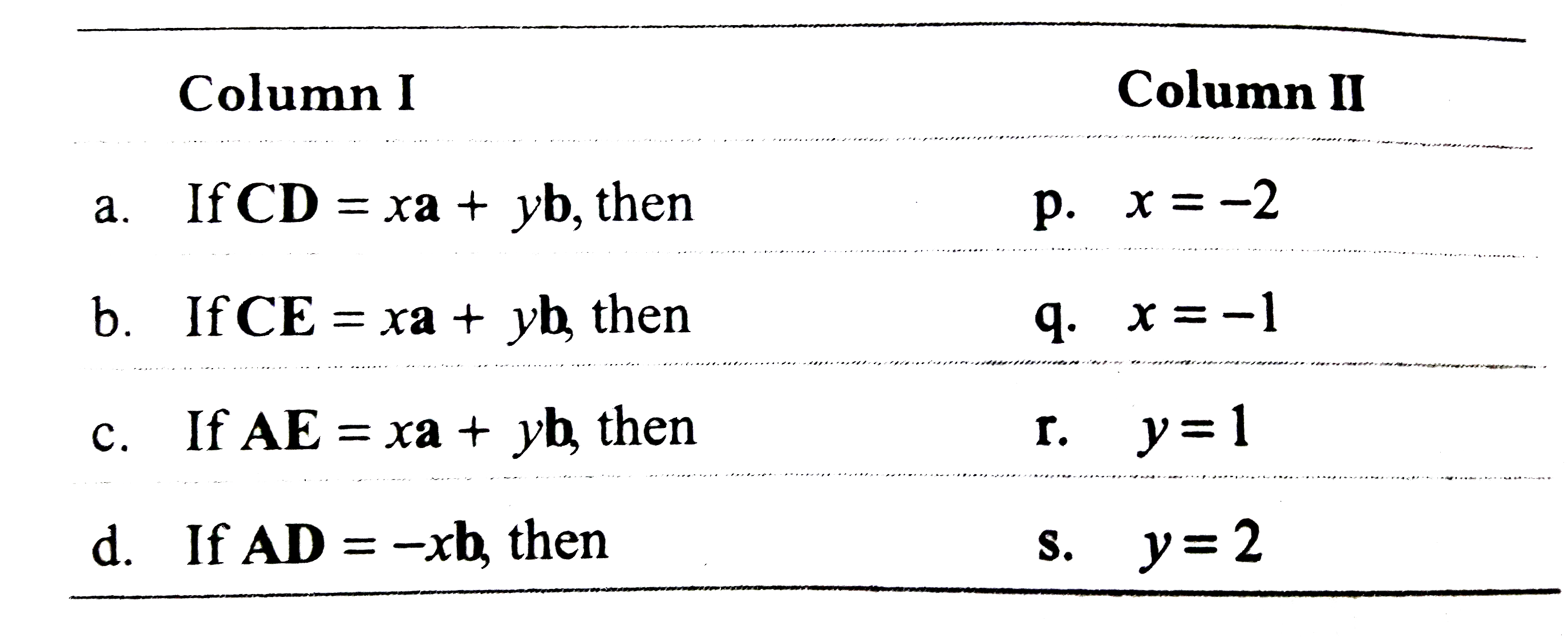If two consecutive vertices of a regular hexagon be z and ¯z , find the other vertices if the centre is z = 0.
To solve the problem of finding the vertices of a regular hexagon given two consecutive vertices z and ¯z with the center at z=0, we can follow these steps:
Step 1: Understand the Geometry of the Hexagon
A regular hexagon has six vertices, and the angles between consecutive vertices are 60∘. The center of the hexagon is at the origin (0,0) in the complex plane.
Step 2: Identify the Given Vertices
Let z be one vertex and ¯z (the conjugate of z) be the consecutive vertex. Since z is a complex number, we can express it as:
z=x+yi
where x is the real part and y is the imaginary part. The conjugate ¯z is:
¯z=x−yi
Step 3: Find the Angle of Rotation
The angle between the vertices of the hexagon is 60∘. To find the next vertices, we will rotate the complex number z by 60∘ in the counterclockwise direction.
Step 4: Use the Rotation Formula
The rotation of a complex number z by an angle θ can be done using the formula:
z′=z⋅eiθ
where eiθ=cos(θ)+isin(θ).
For θ=60∘ (or π3 radians):
eiπ3=cos(π3)+isin(π3)=12+i√32
Step 5: Calculate the Next Vertices
1. First Vertex z1:
z1=z⋅eiπ3=z(12+i√32)
2. Second Vertex z2:
z2=z1⋅eiπ3=z⋅(12+i√32)⋅(12+i√32)
This is equivalent to:
z2=z⋅(12+i√32)2
3. Third Vertex z3:
z3=z2⋅eiπ3=z⋅(12+i√32)3
4. Fourth Vertex z4:
z4=z3⋅eiπ3=z⋅(12+i√32)4
5. Fifth Vertex z5:
z5=z4⋅eiπ3=z⋅(12+i√32)5
6. Sixth Vertex z6:
z6=z5⋅eiπ3=z⋅(12+i√32)6
Step 6: Summary of the Vertices
The vertices of the hexagon can be summarized as:
- z
- ¯z
- z1=z⋅(12+i√32)
- z2=z⋅(12+i√32)2
- z3=z⋅(12+i√32)3
- z4=z⋅(12+i√32)4
- z5=z⋅(12+i√32)5
- z6=z⋅(12+i√32)6
A regular hexagon has six vertices, and the angles between consecutive vertices are 60∘. The center of the hexagon is at the origin (0,0) in the complex plane.
Let z be one vertex and ¯z (the conjugate of z) be the consecutive vertex. Since z is a complex number, we can express it as:
z=x+yi
where x is the real part and y is the imaginary part. The conjugate ¯z is:
¯z=x−yi
The angle between the vertices of the hexagon is 60∘. To find the next vertices, we will rotate the complex number z by 60∘ in the counterclockwise direction.
The rotation of a complex number z by an angle θ can be done using the formula:
z′=z⋅eiθ
where eiθ=cos(θ)+isin(θ).
eiπ3=cos(π3)+isin(π3)=12+i√32
1. First Vertex z1:
z1=z⋅eiπ3=z(12+i√32)
z2=z1⋅eiπ3=z⋅(12+i√32)⋅(12+i√32)
This is equivalent to:
z2=z⋅(12+i√32)2
z3=z2⋅eiπ3=z⋅(12+i√32)3
z4=z3⋅eiπ3=z⋅(12+i√32)4
z5=z4⋅eiπ3=z⋅(12+i√32)5
z6=z5⋅eiπ3=z⋅(12+i√32)6
The vertices of the hexagon can be summarized as:
- z
- ¯z
- z1=z⋅(12+i√32)
- z2=z⋅(12+i√32)2
- z3=z⋅(12+i√32)3
- z4=z⋅(12+i√32)4
- z5=z⋅(12+i√32)5
- z6=z⋅(12+i√32)6
Topper's Solved these Questions
- BOOK - A DAS GUPTACHAPTER - COMPLEX NUMBERSEXERCISE - EXERCISE224videos
COMPLEX NUMBERS
- BOOK - A DAS GUPTACHAPTER - Circular Functions, Identities EXERCISE - Exercise300videos
Circular Functions, Identities
- BOOK - A DAS GUPTACHAPTER - Continuity, Differentiability and Graph of FunctionEXERCISE - Exercise38videos
Continuity, Differentiability and Graph of Function
Similar Questions
Knowledge Check
- Question 1 - Select One
Five point charge (+q each) are placed at the five vertices of a regular hexagon of side 2a.what is the magnitude of the net electric field at the centre of the hexazon?
A14πε0qa2Bq16πε0a2C√2q4πε0a2D5q16πε0a2 - Question 2 - Select One
Three vertices are chosen at random from the vertices of a regular hexagon then the probability that the triangle with these vertices is an equilateral triangle is equal to
A110B35C910D310 - Question 3 - Select One
Five point charges, +q each are placed at the five vertices of a regular hexagon. The distance of the center of the hexagon from any fo the vertices is a. the electric field at the center of the hexagon is
Aq4πε0a2Bq8πε0a2Cq16πε0a2Dzero
If z1,z2 are two complex numbers representing two consecutive vertices of a square then what is the complex number represented by the centre of the square ?
View SolutionThe coordinates of two consecutive vertices A and B of a regular hexagon ABCDEF are (1,0) and (2,0) respectively. The equation of the diagonal CE is:
View SolutionIf points A1,A2,…,A6 representing the complex numbers z1,z2,….,z6 respectively the vertices of a regular hexagon and if z0 be the complex number representing centroid of the hexagon then prove that z21+z22+….+z26=6z20.
View SolutionFive point charges, each +q are placed on five vertices of a regular hexagon of side' l '. Find the magnitude of the resultant force on a charge –q placed at the centre of the hexagon.
View SolutionThree of the six vertices of a regular hexagon are chosen at random. The probability that the triangle with three vertices is equilateral equals
View Solution


